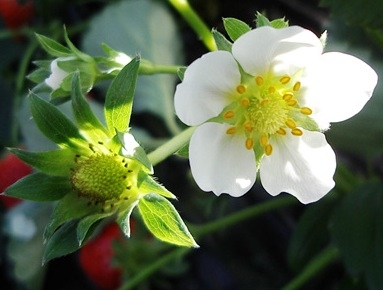
Features
Production
Research
Set strawberry alarm clock for post-apple bloom
April 6, 2017 By Cornell University

April 6, 2017, Ithaca, NY – Growers who time their strawberries to bloom just after apples do can reap a better harvest, according to new Cornell University research.
When apple trees blossom, the sheer abundance of flowers attracts most of the pollinators, which not only leaves fewer bees for other nearby crops such as strawberries, but also lowers their yields. But if growers time their strawberries to flower directly after a neighboring apple bloom, strawberries produce higher yields than they would if there were no apple trees nearby.
The findings, published in the March 27 issue of Nature Scientific Reports, offers growers a sustainable method for boosting yields of crops that bloom around the same time as apples.
Previous research showed that strawberries can have as much as 40 per cent yield increase when bees and other pollinators visit, compared with relying on wind pollination alone.
“We are trying to figure out ways that growers can use ecosystem services to promote crop yield rather than relying on external inputs, such as fertilizers and pesticides,” said lead author Heather Grab, a Cornell University doctoral student in the lab of co-author Bryan Danforth, professor of entomology.
Planting natural habitats around farm fields can lead to improved health of pollinators and a boost in their services, according to research. But for many growers in agriculturally dense areas, increasing natural habitats is not an option.
“Those growers need some more sustainable agriculture options,” Grab said. “If growers pay attention to timing of when crops are blooming and manipulate that by planting apple varieties and strawberry varieties that don’t overlap, you can get a boost in yield that is almost equivalent to having natural habitat nearby.”
Print this page